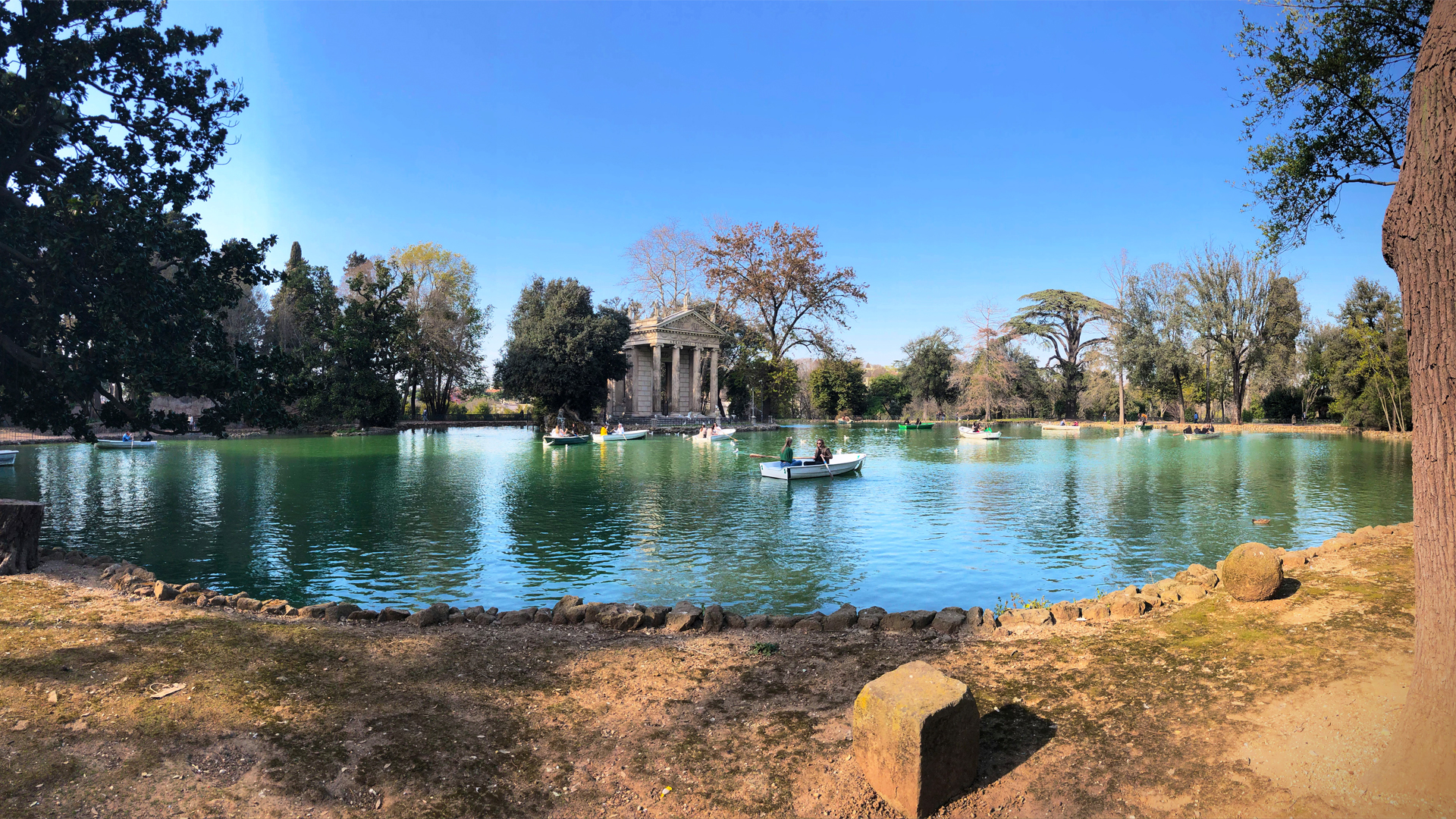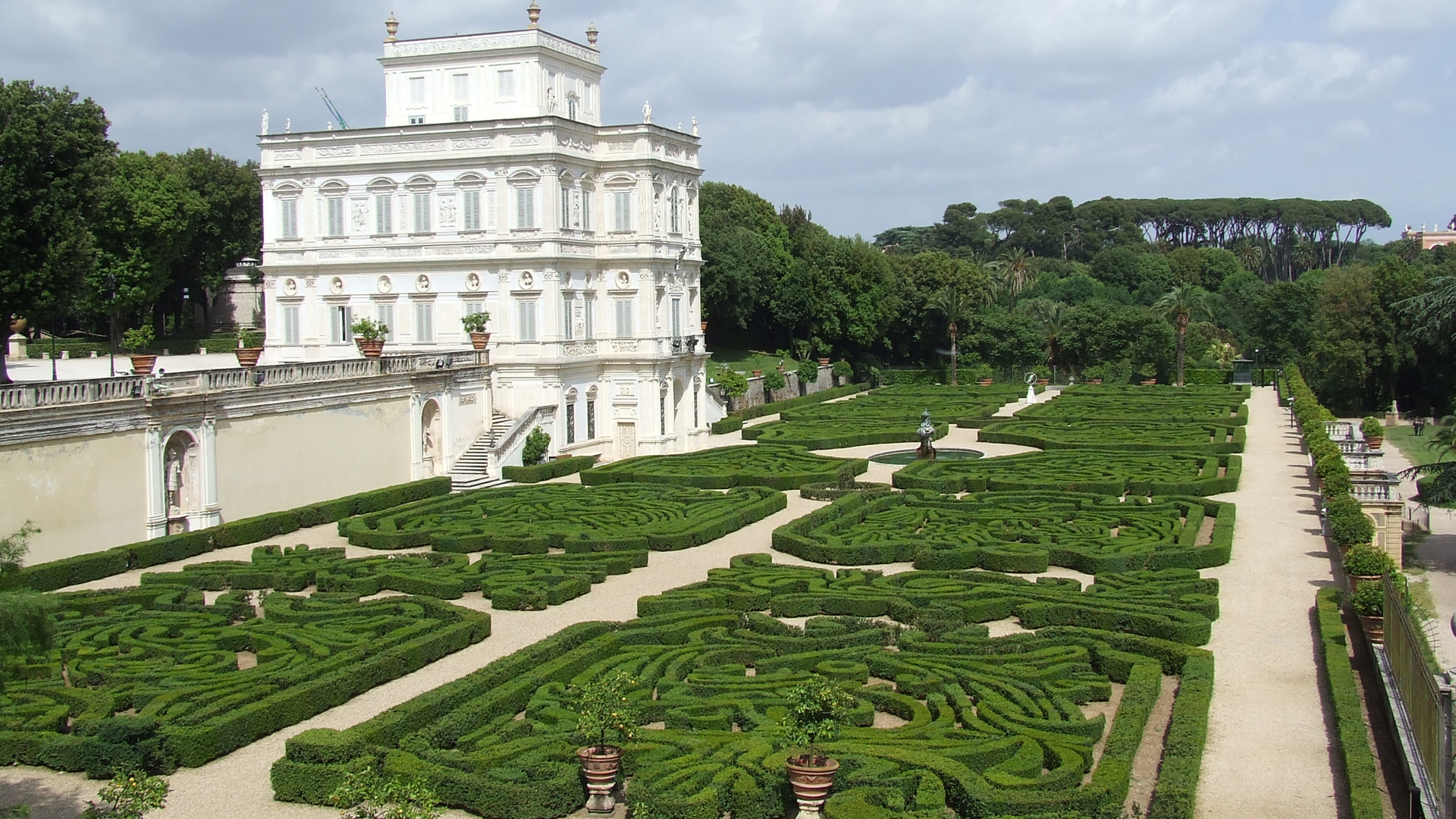Believe it or not, Rome isn’t just made up of ancient monuments and quaint streets. It’s also home to numerous public urban parks and landscaped gardens that offer a moment of refuge from the hustle and bustle of the city. From gardens filled with roses and manicured Renaissance-era landscapes to parks with panoramic views of the city, Rome is no stranger to green spaces. Take a look at five of Rome’s most beautiful parks.
Villa Borghese

Located on Pincian Hill and overlooking the Spanish Steps and Piazza del Popolo are the Villa Borghese Gardens. Covering an area of around 200 acres, they were developed in 1606 by Cardinal Scipione Borghese who set out to transform his former vineyard into the city’s largest gardens. Today, it is the third largest public park in Rome, after Villa Doria Pamphili and Villa Ada. The park is free of charge and is open every day from dawn to dusk.
The Orange Garden

The Orange Garden offers one of the best panoramic views of Rome. Teetering on the top of the Aventine Hill, one of the seven ancient hills of Rome, the park roughly covers two acres. The crown jewel of its vista is St. Peter’s dome, which in some mind-bending optical illusion appears to shrink the closer you get to the view. Designed in 1932 by Raffaele De Vico, the Orange Garden has umbrella pine trees, manicured lawns, pebbled pathways, marble benches, and of course, lots of orange trees. It’s one of the most romantic parks in Rome and is often frequented by local artists and musicians. The park is open every day from dawn to dusk.
Villa Doria Pamphili

Villa Doria Pamphili is a 17th-century villa at the center of Rome’s largest landscaped public park. Located in the Monteverde neighborhood, it was built by the noble Roman Pamphili family in 1630. The park’s main attraction is the Casino del Bel Respiro, the “small villa of good breath,” a baroque-style villa filled with priceless statues that overlooks a secret geometric garden.
The Rose Park

Located on the slopes of the Aventine Hill and overlooking the remains of Circus Maximus, an Ancient Roman chariot-racing stadium, is the Roseto, also known as the Rose Park. The rose garden has been dedicated to flowers ever since the third century BC. Roman historian Tacitus once wrote of a temple dedicated to the goddess Flora, whose celebrations took place in Circus Maximus in the spring. Today, the Roseto is home to more than 1,000 species of roses from around the world, including China and Mongolia.
Regional Park of Appia Antica

The Regional Park of Appia Antica is the second largest urban park in Europe after the Losiny Ostrov National Park in Moscow. The protected natural area covers more than 8,600 acres and is spotted with the remains of Ancient Roman temples, aqueducts, and roads. A prime location for picnics and bicycle riders, its main reference point is the Appian Way, also known as the Regina Viarum (Queen of Roads), a roughly 10-mile ancient Roman road that stretched across the country.
Asia London Palomba
Asia London Palomba is a trilingual freelance journalist from Rome, Italy. In the past, her work on culture, travel, and history has been published in The Boston Globe, Atlas Obscura, The Christian Science Monitor, and Grub Street, New York Magazine's food section. In her free time, Asia enjoys traveling home to Italy to spend time with family and friends, drinking Hugo Spritzes, and making her nonna's homemade cavatelli.


